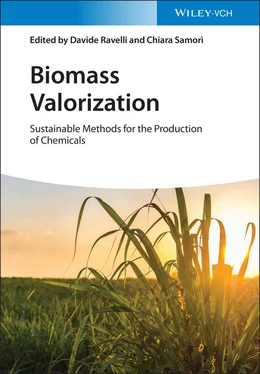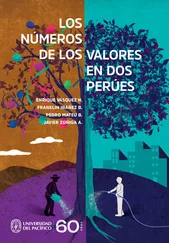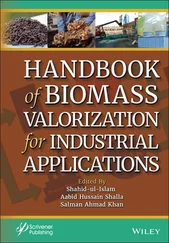Biomass Valorization
Здесь есть возможность читать онлайн «Biomass Valorization» — ознакомительный отрывок электронной книги совершенно бесплатно, а после прочтения отрывка купить полную версию. В некоторых случаях можно слушать аудио, скачать через торрент в формате fb2 и присутствует краткое содержание. Жанр: unrecognised, на английском языке. Описание произведения, (предисловие) а так же отзывы посетителей доступны на портале библиотеки ЛибКат.
- Название:Biomass Valorization
- Автор:
- Жанр:
- Год:неизвестен
- ISBN:нет данных
- Рейтинг книги:3 / 5. Голосов: 1
-
Избранное:Добавить в избранное
- Отзывы:
-
Ваша оценка:
- 60
- 1
- 2
- 3
- 4
- 5
Biomass Valorization: краткое содержание, описание и аннотация
Предлагаем к чтению аннотацию, описание, краткое содержание или предисловие (зависит от того, что написал сам автор книги «Biomass Valorization»). Если вы не нашли необходимую информацию о книге — напишите в комментариях, мы постараемся отыскать её.
Explore the potential of biomass-based chemicals with this comprehensive new reference from leading voices in the field Biomass Valorization: Sustainable Methods for the Production of Chemicals
Biomass Valorization: Sustainable Methods for the Production of Chemicals
Biomass Valorization — читать онлайн ознакомительный отрывок
Ниже представлен текст книги, разбитый по страницам. Система сохранения места последней прочитанной страницы, позволяет с удобством читать онлайн бесплатно книгу «Biomass Valorization», без необходимости каждый раз заново искать на чём Вы остановились. Поставьте закладку, и сможете в любой момент перейти на страницу, на которой закончили чтение.
Интервал:
Закладка:
409 401
410 402
411 403
412 404
413 405
414 406
415 407
416 408
417 409
418 410
419 411
420 412
421 413
422 414
423 415
424 416
425 417
426 418
427 419
Biomass Valorization
Sustainable Methods for the Production of Chemicals
Editors
Prof. Davide Ravelli
Chiara Samorì

Editors
Prof. Davide Ravelli
University of Pavia
Department of Chemistry
viale Taramelli 12
27100 Pavia
Italy
Prof. Chiara Samorì
University of Bologna
Department of Chemistry “Giacomo Ciamician”
via S. Alberto 163
48123 Ravenna
Italy
Cover© TB studio/Shutterstock
All books published by WILEY‐VCHare carefully produced. Nevertheless, authors, editors, and publisher do not warrant the information contained in these books, including this book, to be free of errors. Readers are advised to keep in mind that statements, data, illustrations, procedural details or other items may inadvertently be inaccurate.
Library of Congress Card No.:
applied for
British Library Cataloguing‐in‐Publication Data
A catalogue record for this book is available from the British Library.
Bibliographic information published by
the Deutsche Nationalbibliothek
The Deutsche Nationalbibliothek lists this publication in the Deutsche Nationalbibliografie; detailed bibliographic data are available on the Internet at < http://dnb.d-nb.de>.
© 2021 WILEY‐VCH GmbH, Boschstr. 12, 69469 Weinheim, Germany
All rights reserved (including those of translation into other languages). No part of this book may be reproduced in any form – by photoprinting, microfilm, or any other means – nor transmitted or translated into a machine language without written permission from the publishers. Registered names, trademarks, etc. used in this book, even when not specifically marked as such, are not to be considered unprotected by law.
Print ISBN:978‐3‐527‐34717‐9
ePDF ISBN:978‐3‐527‐82501‐1
ePub ISBN:978‐3‐527‐82503‐5
oBook ISBN:978‐3‐527‐82502‐8
Foreword
Why bother with biomass conversion? It seems so difficult compared to converting hydrocarbons into products. People used to think that we were about to run out of fossil fuels, but that was a red herring – there is enough left in the ground to serve us for hundreds of years. So, if running out of hydrocarbons is not the problem, then why are we trying to convert biomass? The problem is in the consequences of hydrocarbon usage, not in the depletion of hydrocarbons. Those consequences are severe. Fossil fuel resources are heavily contaminated with sulfur, mercury, and other pollutants. Many products from such feedstocks are persistent, leading to problems such as plastics in the oceans. However, most importantly, burning fossil‐based fuels or incinerating fossil‐based products generates carbon dioxide while the production of the feedstocks consumes no CO 2.
Now, imagine a sustainable future – a future in which all of our needs are met with products made from renewable resources, and those same products are themselves recycled into new products. The feedstocks are nontoxic, the products are biodegradable, and greenhouse gas emissions are completely offset by CO 2consumption. Everyone would agree with that as a desirable goal, but we are a long way from that future. There is so much work to do before we get there. We as a society are married to our petrochemical past in so many ways, from the products we choose to make, the ways in which we make those products, and even what we teach our future chemists and chemical engineers at the universities. We need to divorce ourselves from our petrochemical past in order to bring about that sustainable future.
Make no mistake about it. That divorce is going to be messy, but it is still worth doing. At first, we thought that it would be easy. Just make existing products from biomass instead of fossil fuels. It sounds so simple, but study after study has shown that the environmental impact of transforming biomass into traditional chemical products is usually more harmful than making the same products from fossil fuels. So, what are we going to do? We have to be smarter about it. Those traditional chemical products were chosen in the past because they were easy to make from hydrocarbons. Why cannot we choose new chemical products? Let us choose chemical products that are easy to make from biomass !
Choosing new products is not the only task on our To Do list. There is a long list of tasks ahead of us. We have to
increase our knowledge of biomass conversions.
evaluate new conversion processes and products in terms of potential environmental impact, not just as an afterthought but during the design stage,
use only renewable energy in the biomass conversion processes,
develop less energetically costly ways of removing organic products from water, given that water is often the solvent for fermentations and other standard techniques for biomass transformations,
build up supply chains from producers of raw biomass, through transportation and conversion to platform chemicals, all the way to manufacture finished products,
seek new sustainable feedstocks and new platform chemicals, keeping in mind their potential availability at industrial scale and the environmental impact of using such feedstocks at scale,
design our new products so that they can be recycled efficiently, can biodegrade if discarded, and do not themselves lead to environmental crises,
change how organic chemistry is taught at the universities so that biomass feedstocks become the norm.
That sounds like a lot of work, but do not despair. There are so many talented people working on biomass conversion, such as the authors and editors of this volume, that each of these items on our “To Do” list can be achieved. The sheer variety of approaches described in the following chapters assures me that there is great hope for the future of biomass conversion. Many of you, the readers, are also developing new technologies for sustainable chemical manufacturing. We will attain that sustainable future , and this book demonstrates that we are making progress toward that goal.
My commendations to Chiara Samorì and Davide Ravelli for putting this work together, to the authors for their many contributions to the book and the field, and indeed to everyone in the green and sustainable chemistry research community for their efforts in developing the chemistry that will make sustainable living a reality.
August 2020
Philip Jessop
Queen's University
Preface
It is nowadays apparent that the chemistry of the future will involve the exploitation of biomass‐based renewable materials, the currently available stock of fossil resources being doomed to exhaustion. This transition may indeed bring about several benefits because having recourse to renewable resources should limit the impact human activities are having on climate change.
Currently, the use of biomass by mankind is limited to addressing a few specific needs, notably fulfilling the feed demand and supplementing energy production in addition to the fossil fuel portfolio. The impact of these activities on the net primary production (NPP) of terrestrial and marine biomass can be accounted for by considering the human appropriation of net primary production (HANPP) parameter, which corresponds to all the human alterations of photosynthetic production in the ecosystems. This constant HANPP represents a significant fraction of the NPP and has a huge impact on ecosystems because it reduces the amount of energy available to other species, influences biodiversity, and alters water, energy, and carbon flows within food webs, also modifying the distribution of resources. In the prospected future scenario of a massive use in industry, biomass will at some point become a scarce resource, and its utilization should be considered wisely, accordingly. In particular, the entire substitution of fossil fuels with biomass for energy production purposes is unrealistic because of the huge amount of biomass that should be devoted at this end. Furthermore, one may argue if this kind of application is the best use possible of biomass, fully exploiting its characteristics in terms of chemical composition.
Читать дальшеИнтервал:
Закладка:
Похожие книги на «Biomass Valorization»
Представляем Вашему вниманию похожие книги на «Biomass Valorization» списком для выбора. Мы отобрали схожую по названию и смыслу литературу в надежде предоставить читателям больше вариантов отыскать новые, интересные, ещё непрочитанные произведения.
Обсуждение, отзывы о книге «Biomass Valorization» и просто собственные мнения читателей. Оставьте ваши комментарии, напишите, что Вы думаете о произведении, его смысле или главных героях. Укажите что конкретно понравилось, а что нет, и почему Вы так считаете.












